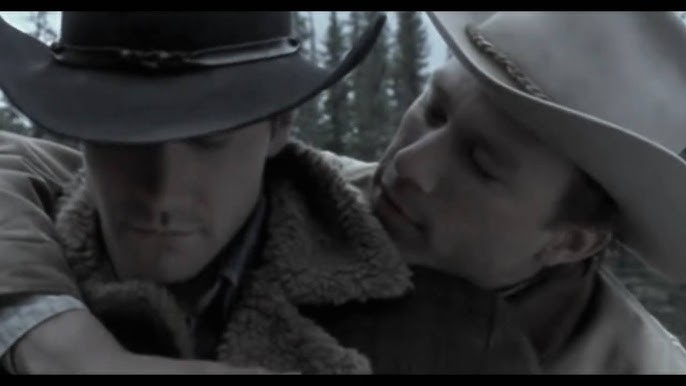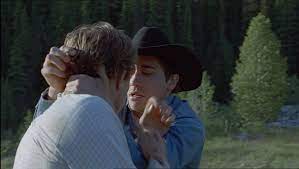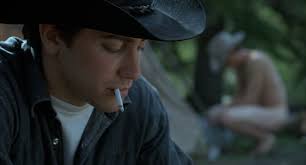🎬 Brokeback Mountain (2005)

Brokeback Mountain (2005) Review
Introduction
Directed by Ang Lee, Brokeback Mountain (2005) is a groundbreaking romantic drama that redefined storytelling in mainstream cinema. Based on Annie Proulx’s short story, the film delves into the complex relationship between two men set against the backdrop of the rugged American West. Featuring masterful performances by Heath Ledger and Jake Gyllenhaal, Brokeback Mountain is both a tender love story and a poignant commentary on societal expectations, love, and identity.
Plot Overview
Set in the 1960s, the film follows Ennis Del Mar (Heath Ledger) and Jack Twist (Jake Gyllenhaal), two young men hired to work as ranch hands on Brokeback Mountain. During their time together, an intense and unexpected bond forms, evolving into a deep romantic connection.
After their summer on the mountain ends, Ennis and Jack part ways but struggle to let go of their feelings for one another. Over the years, they navigate their separate lives—marrying and raising families—while continuing to meet in secret. Their love is marked by passion, longing, and heartbreak, as they grapple with the impossibility of living openly in a society that condemns their relationship.

Strengths
1. Powerful Performances
Heath Ledger delivers a career-defining performance as the reserved and emotionally conflicted Ennis. His ability to convey complex emotions through subtle gestures and quiet intensity is nothing short of remarkable. Jake Gyllenhaal’s portrayal of the more expressive and hopeful Jack complements Ledger perfectly, creating a compelling dynamic that drives the film’s emotional core.
2. Ang Lee’s Direction
Ang Lee’s meticulous direction imbues the film with a quiet elegance. His ability to balance intimate moments with sweeping landscapes creates a poignant contrast between the vastness of the setting and the constrained lives of the characters.
3. Cinematography
Rodrigo Prieto’s cinematography captures the rugged beauty of the American West, using wide shots and natural lighting to emphasize the isolation and longing that permeate the story. The imagery of Brokeback Mountain itself becomes a metaphor for the freedom and love that Ennis and Jack can only experience in fleeting moments.
4. Authentic and Emotional Storytelling
The screenplay by Larry McMurtry and Diana Ossana remains faithful to Proulx’s original story while expanding its emotional depth. The film’s exploration of love, repression, and societal pressures feels both timeless and universal.
5. Heartbreaking and Thought-Provoking Themes
The film’s exploration of forbidden love, identity, and the cost of societal judgment resonates deeply. It forces viewers to confront the devastating impact of prejudice and the sacrifices people make to conform to societal expectations.
Weaknesses
1. Deliberate Pacing
While the film’s slow pace allows for deep character development, some viewers may find the narrative progression too languid. This pacing may deter those expecting a more dynamic storyline.
2. Underexplored Supporting Characters
While Ennis and Jack’s story takes center stage, the lives of their families, particularly their wives Alma (Michelle Williams) and Lureen (Anne Hathaway), could have been further explored. Their perspectives are compelling but feel secondary to the main narrative.
Themes and Symbolism
1. Repression and Longing
The film poignantly portrays the emotional toll of living inauthentically. Ennis’s inability to embrace his love for Jack highlights the devastating effects of societal and self-imposed repression.
2. Nature as Freedom
Brokeback Mountain itself symbolizes the sanctuary where Ennis and Jack can freely express their love, away from the constraints of society. Its idyllic beauty contrasts sharply with the harsh realities of their daily lives.
3. The Fragility of Love
The film underscores the fragility of love in the face of societal pressures and internal fears. Ennis and Jack’s relationship is a testament to the power and pain of love that cannot fully flourish.
Visual and Technical Aspects
1. Score
Gustavo Santaolalla’s haunting score is an integral part of the film’s emotional resonance. The minimalist guitar motifs underscore the film’s themes of longing and heartbreak.
2. Production Design
The film’s period-accurate costumes and sets immerse viewers in the mid-20th century, adding authenticity to the narrative. From rural ranches to small-town diners, every detail feels meticulously crafted.
3. Editing
Geraldine Peroni’s editing ensures that the film’s transitions between years and scenes feel seamless, maintaining its narrative flow despite its non-linear structure.
Final Verdict
Brokeback Mountain (2005) is a masterpiece of modern cinema that transcends its genre to deliver a universal story of love, loss, and resilience. With unforgettable performances, stunning visuals, and profound themes, the film remains a powerful exploration of the human condition. Though its deliberate pacing and limited exploration of supporting characters may not appeal to all, its emotional impact is undeniable.
Rating: 9.5/10